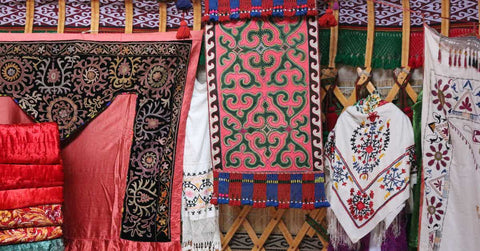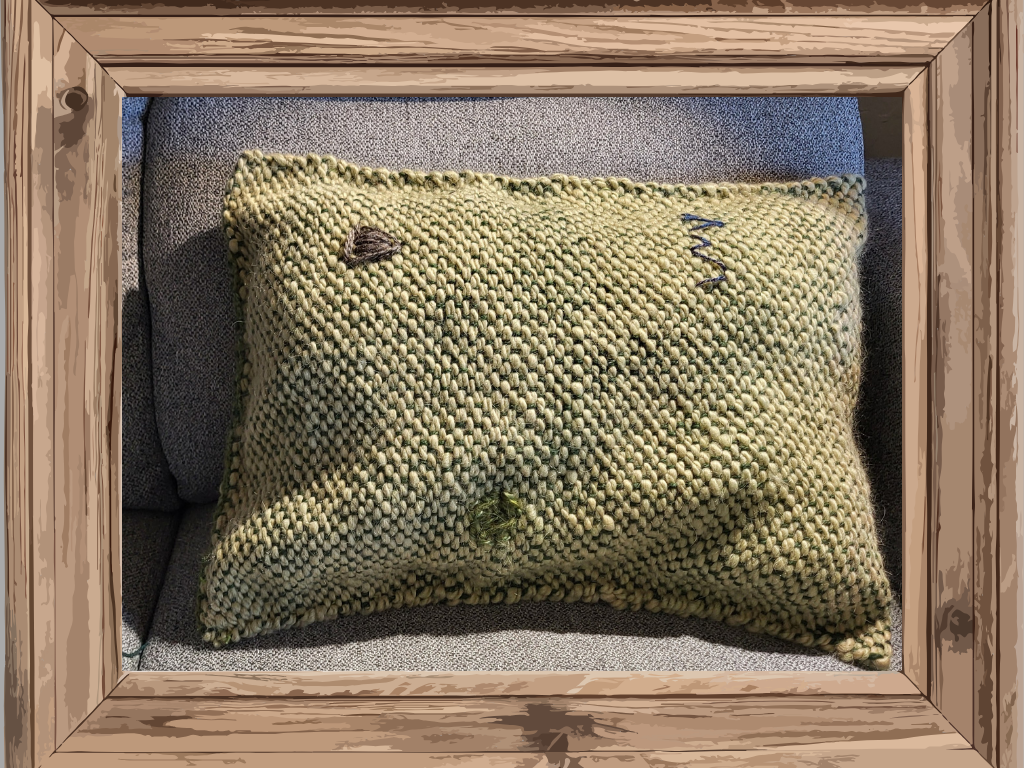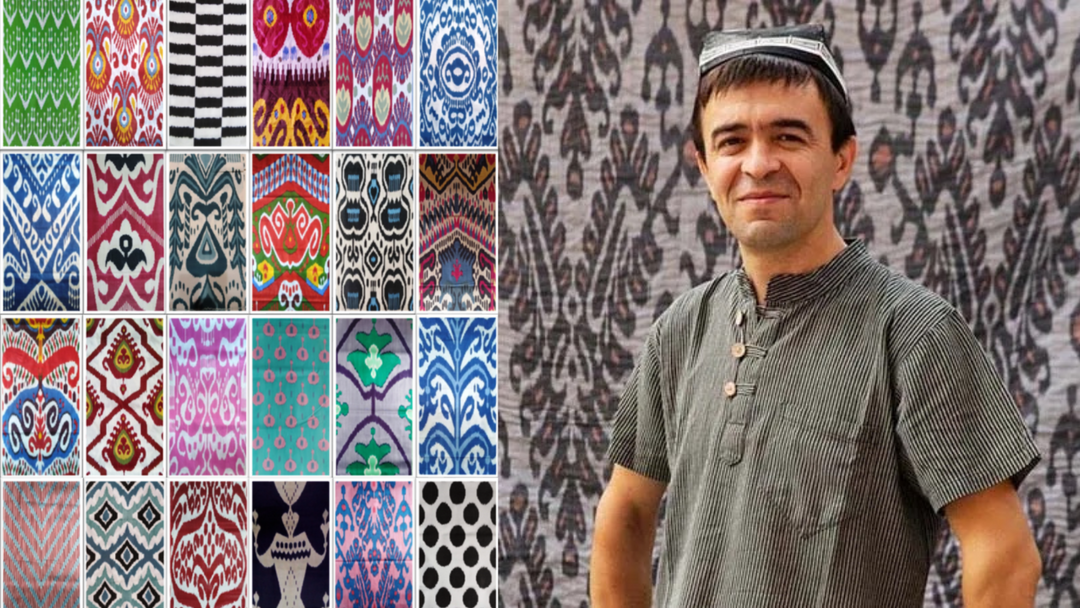I was thinking again this week about my travel grief.
I had planned a major European trip for the summer of 2020, a trip two years in the making that was going to be a treasure trove of exploration. My husband and I were going to take a small ship cruise from Copenhagen to circumnavigate Iceland, and slowly explore the island and its beautiful natural environment with local guides.
Then we were going to spend almost a week in Dublin, getting in touch with our Irish heritage. I couldn't wait to visit Trinity College, and line up some local tours and maybe even a visit to see the Giants Steps.
Then I was going to fly to Santiago de Compostela in Spain for a weeklong business retreat with my business coach Tania. She grew up in Spain and lived in this region for many years. So in addition to intense focus on building HoonArts, I would also get to explore a part of Spain I had never seen with a local! And I would get the chance to practice my first language love. (I was a Spanish major as an undergraduate). It was all a summer travel dream come true!
And then Covid-19 descended on the world and all our plans were canceled. The joy of anticipated travel turned into the dismay of learning that our expensive travel insurance didn't cover a worldwide pandemic. That turned into the hassle of applying for refunds and chasing them down and waiting anxiously to see if the cash actually arrived. We watched the travel industry around the world sink into economic collapse. Fortunately the refunds did indeed eventually arrive, spread out in dribs and drabs over several months.
And most of all, I felt the enormous sadness of missing out on a summer of fabulous travel the way I love it best--slowly, with locals, getting to know people and culture from the inside. I'm still not "over it"––the grief lingers, and it will probably never go away entirely. Just as you never stop grieving a lost loved one, but the pain becomes less intense with time.
So when I was thinking about what I wanted to share with you this week, it seemed entirely appropriate that what came to mind was the Kyrgyz yurt. Because the traditional Kyrgyz yurt is called upon as a place to gather for mourning. Even in the cities, people will rent yurts to celebrate funerals.
So I invite you to join me in a Kyrgyz yurt to mourn the loss of travel and so much else of "normal life" that has disappeared during the last 7 months. And I hope that sharing this experience through the personal lens of locals (in this case, our dear Kyrgyz artisan partner and adopted "daughter" Zhanyl Sharshembieva), you'll have some of that same wonderful experience of being a true traveler instead of just a tourist.
Once I decided on the Kyrgyz yurt as the topic, I immediately shot off a list of questions to Zhanyl by email. And as usual, Zhanyl generously responded within 24 hours. And then I had more questions, and once again she shared her knowledge. So we both hope that you will feel a bit of that personal connection that comes with travel the "local way."

I took this photo of Zhanyl (on the right, with her sister Gulya) in July 2019, at the Santa Fe International Folk Art Festival. Zhanyl is daughter number 5 in the famed artisan group Seven Sisters. She is the English speaker in the group, and she is both a felting artist and a master jeweler.
The Sharshembieva Family Yurt
I asked Zhanyl if her family had a family yurt. Yes, it turns out they do. Like in most Kyrgyz families, it's the ultimate living family heirloom. With some searching, she was able to find an old snapshot of the family yurt, taken in the 1980's. This yurt belonged to her grandmother.

"Our grandmother's yurt was very often used, as I already wrote, both at funerals and at celebrations. She inherited the wooden frame of the yurt from her ancestors, and she made the felt coverings and interior decorations herself. They also [lent] this yurt to their fellow villagers if they asked. At present, this yurt is kept by the grandchildren of her youngest son. (Usually the youngest son [stays with the parents to care for them and ultimately] inherits the house, etc.). My dad said that that yurt needs restoration."
Zhanyl also sent along a couple of photos of "modern" yurts in her family village near Issyk-Kul (the huge lake in the eastern part of the country). Zhanyl and her husband and children (and baby granddaughter) live and work in the capital city of Bishkek, which is about 5 hours drive to the west of Issyk-Kul. These photos were taken during a recent Navruz (major spring holiday celebrated throughout Central Asia) celebration.


"In the nomad's house, patterns were everywhere: on household utensils, in clothes, bedding. Embroideries of craftswomen, carving of masters, lines of jewelers, inspired by their hands conveyed all the beauty of the surrounding nature, meeting the aesthetic requirements of the taste of a nomad. This is proof that the yurt is not only a dwelling place for the Kyrgyz, but also a repository of knowledge and skills of folk crafts.
The patterns of ancestors can tell a lot, reflecting the spiritual life of the people. For example, there are common ornaments "Umai ene" or "tumar," which serve as a talisman, protection from evil spirits. Each thing had its own semantic load, since the craftswoman thought and created in her thoughts a vision of how to make a thing so that it has integrity, completeness. The narration is concluded in combinations of individual elements, where various lines and shapes are combined. The motives for the patterns were the flora and fauna, the surrounding mountain landscapes, of which the nomad himself was a part. He transferred his love, attitude, care, fear, respect with patterns to his things. Entering his home, the Kyrgyz continued to live in harmony and unity with nature."
Several years ago, Zhanyl had sent me photos her father had taken at the 2018 World Nomad Games held in Krygystan. Some of these photos show off more of the traditional patterns that adorn the yurts, inside and out.


Felted Patterns

The wooden frame, folded up for easy transport.

Traditional Floral Embroidery Patterns

Tassel Decorations

The Leather Trunk

More Embroidery

The "Tor"-The Place of Honor
A Touch of History
No one knows for sure exactly when or where the yurt originated. Experts agree, however, that yurts were used by many nomadic people of Central Asia, including the Kyrgyz, Huns, Turks, Mongols, Kazahks, and Turkmens, Karakalpaks, Altaians, Kalmyks, Nogais and Bashkirs. Although the round shape came to have symbolic meaning, it also made for a very sturdy and stable design that stood up to the winds of the steppes.
The Kyrgyz yurt is made of a lightweight collapsible wooden lattice frame. The outer layer is a felt covering made from sheep’s wool, white on either side and a thicker layer of brown/black wool in the middle.
Traditional yurts were always portable and easily and quickly assembled and disassembled for the nomadic lifestyle. Originally they were transported by horses, camels or yaks. These days, everyone uses trucks and even small cars. In this photo, in the middle distance, you can see some of these cars.

You can watch a video of Kyrgyz family putting up a yurt here.
Originally, yurts were constructed in the mountains and a nomadic family lived in the yurt their entire life. These days, yurt construction takes place mostly in one or two small villages in the Issyk-Kul region. Very few Kyrgyz lead a truly nomadic existence. Most live in modern permanent houses or apartments in cities and villages, though there are a few semi-nomadic people who continue to use yurts for summer pasturing of livestock.
The Kyrgyz yurt has four parts that are not separated by walls. The place opposite the entrance, called the "tor", is considered to be the place of honor, reserved for guests and the old men of the family. (See the photo above.) The area to the right of the entrance is considered to be the women's section, called "epchi jak," where women cook and keep their dishes and cooking implements and items for sewing and knitting. The area to the left of the entrance was the men's side, called "er jak," which would hold harnesses and hunting knives, and everything necessary for herding and hunting. Usually there was a small chest, where people would place their blankets, pillows and fur clothes, representing the family's wealth.
The top of the yurt is a wooden circle, called a "tunduk," which forms one of the most essential symbols of family and the universe. A small flap of felt covers the tunduk, which can be opened when weather is nice to let in light and fresh air, and closed when the weather is cold and wet.

The tunduk is one of the most essential designs in Kyrgyzstan, and is used on the national flag.

Although the Kyrgyz yurt is no longer the common home, it is still a living heirloom, the repository of Kyrgyz history and culture. And as Zhanyl explained, it's still used in all important Kyrgyz gatherings, including weddings, funerals, other family celebrations and holidays, even by city dwellers.
This little "tour" of the Kyrgyz yurt, with the stories from Zhanyl, helped make up, in a small way for my lost travel experiences of 2020. And it also helped give me a virtual place to mourn that loss.
I hope you also experienced a little bit of that flavor. Maybe, just maybe, some of your grief from the losses of 2020 is also a little bit lighter.
Bring Home A Souvenir of Your Virtual Journey
If you want to make this visit truly memorable, why don't you bring home a felted silk scarf or shawl from Seven Sisters or a little felt yurt Christmas ornament of your own? Then, whenever you look at this virtual souvenir, you'll remember your journey to the windswept mountains of Kyrgyzstan and "listening" to Zhanyl tell you the stories of her family yurt and how it embodies the heart of Kyrgyz culture.







Leave a comment